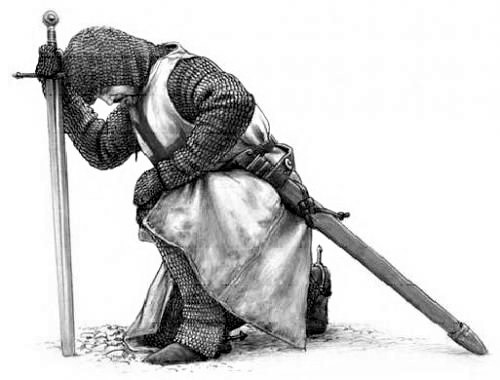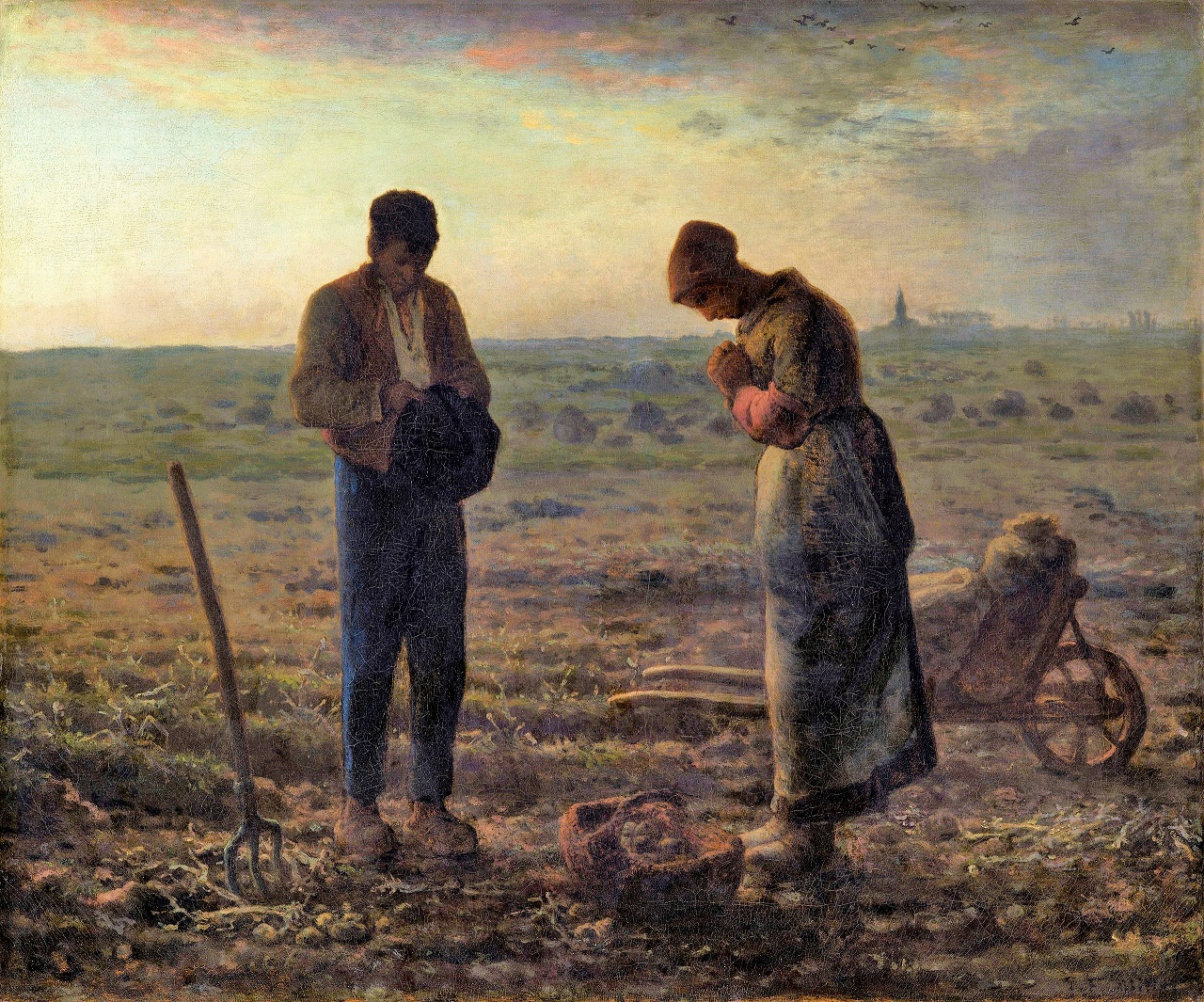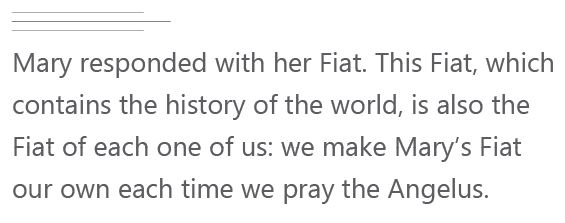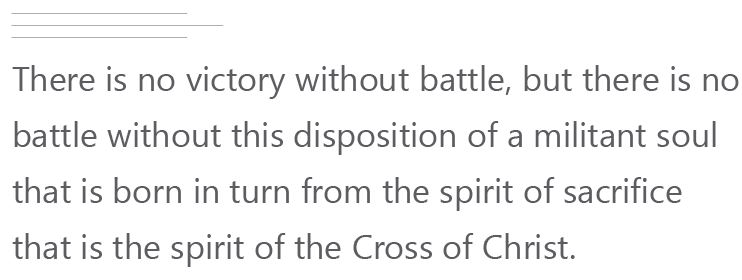The mystery of the Incarnation is the central mystery of Christianity. The entire history of sinful and redeemed humanity revolves around the Incarnation. It is thanks to the Incarnation that Mary received her highest privilege, the one from which all of her other privileges flow: the Divine Maternity. The prayer of the Angelus contains and glorifies this Mystery.
It seems that the origin of this prayer goes back to the pontificate of Blessed Urban II (1098-1099). It is said that at the Council of Clermont (1095), this Pope established the recitation of the Angelus in the morning and in the evening, for the purpose of invoking the protection of the Virgin over the Crusades. The pious practice of reciting the Angelus spread throughout Christianity until it was reproposed by Pope Gregory IX (1227-1241). It is said that Gregory IX ordered the ringing of bells to accompany both the elevation of the Host at Mass and also the recitation of the Angelic salutation to Mary.
However, we ought to distinguish the official recognition of this religious practice in the 13th century from its historical origins, which are much more remote. Since the High Middle Ages there was the civic-religious practice of ringing the bells of the monasteries and convents at the time of the first shadows of night to signal the time of the recitation of certain prayers after the hour called “Compline” around nine in the evening. The ringing of the bells announced the hours not only for monasteries but for all of society: Matins around midnight, and then every three hours: Lauds at about three in the morning, Prime at six, Terce at nine, Sext at noon, None at three in the afternoon, Vespers at six, and Compline around nine. There were no clocks. The hours of men were regulated by the ringing of the monastery bells. This practice explains the origin of the so-called curfew – in Medieval Latin ignitegium or salvaterra, the signal to return home after the day of work. The bell signaled curfew by ringing uninterrupted for a certain amount of time, for example a quarter of an hour, for the purpose of calling the farmers back home from the fields. At the end of the signal the gates of the city were locked, and it was prohibited to be out in the streets without carrying a lantern.
This article appeared in the February 29th Remnant Newspaper.
The Remnant Newspaper is the oldest traditional Catholic periodical in the world.
Do you subscribe yet?![]()
The first official intervention of the Holy See in favor of reciting the Angelus in the evening was made by Pope John XXII (1316-1334) and goes back to 1318, the third year of his pontificate. In a letter dated October 4 of that year, John XXII praises the practice of the church in Saintes [in southwest France] and other French churches of ringing the bells at the time of evening prayers, and he grants an indulgence of ten days to those who, when they hear these bells ringing, kneel and pray three Hail Marys. Nine years later, in 1327, the same Pontiff ordered that the practice of greeting the Virgin Mary with three Aves in the evening at the time the church bells were rung was also to be introduced in Rome. This act of John XXII came about as a natural consequence of the wider spread of the practice of saying three Ave Marias at the sound of the bells at the hour of nightfall. It is said that, after this, the Bishops competed with each other in encouraging the faithful entrusted to their care to say the Angelus every evening. By the first years of the 14th century, the sound of the evening Angelus bells had already made its way to many other places outside of Italy (Emilio Campana, Maria nel culto cattolico, Marietti, Turin 1933, p. 573).
As far as the exact time at which the evening Angelus bells were rung, it does not seem that there was any constant rule. It seems that in England the evening Ave Maria was rung at six o’clock, while in Paris the bells were regularly rung at nine in the evening, at least around the middle of the 15th century. We know this from the poet Francesco Villon, who wrote in his poetic will in 1456: “Finally in writing this evening...I hear the bell of the Sorbonne that always rings the greeting that the Angel spoke at nine o’clock.”
In addition to sunset, there was also the civil and religious practice since ancient times of ringing the bell at dawn in order to invite the faithful to immediately raise their minds to God at the beginning of the day. In the monasteries and convents, at the hour of Prime at the words Sancta Maria et omnes sancti, there was the habit of making the great prostration at which all the members of the community had to be present. Towards the end of the 13th century, the ringing of bells at dawn came to be seen as a counterpart to ringing the bells in the evening, and so it acquired a Marian significance.
Archbishop Arundel of Canterbury, in a constitution of 1399, after recalling the special protection that the Virgin granted to England and the special obligation England had to be devoted to her, added that in order to satisfy the pious desire of King Henry IV, who at the time had just ascended to the throne, he was now requiring that the church bells be rung also at the time of the morning Ave Maria, just as they were already rung in the evening, and that when they were rung in the morning everyone was to recite one Pater and five Ave Marias. To whomever would practice such a devotion, he granted an indulgence of 40 days.
Moving from England to Germany, we find that the same indulgence was granted to the morning Angelus by the Council of Breslau in 1416, on the condition that the faithful recite one Pater and three Ave Marias. The same favor was granted in 1423 to whomever recited three Paters and three Ave Marias. And without accumulating other citations of this nature, we can affirm as a certain thing that by the middle of the 15th century the custom of the morning Angelus was generally practiced throughout Europe. Saint Antonino of Florence, whose writings date back to this exact era, speaks of the morning Angelus as something that is already quite well-established in the practice of the Church.
The Angelus was a prayer that originated as an homage to the Blessed Mother, and in particular to the Mystery of the Incarnation, but which had, along with its religious significance, a civil significance. But we must remember that in the Middle Ages the modern separation between the religious sphere and the temporal sphere did not exist. The Angelus was first called the “prayer of peace” – in fact, its purpose was to honor the Son of God who, becoming incarnate in the womb of the Virgin Mary, laid the foundations of peace among men. And yet the Angelus was also a prayer that called to arms and that invoked the protection of the Virgin in time of war, above all in the battles of the Lord. This was the primary reason for the institution of the third Angelus of the day, after the Angelus of the evening, which came first, and the Angelus of the morning, which came second: the midday Angelus.
In the 15th century Christianity was gravely threatened by the Ottoman Empire. In 1451 a Sultan died who had made all of Europe tremble: Murad II. But his successor was a young man only 21 years old, with the significant name Mahomet II, and he would show himself to be even more dangerous. His advance toward Europe seemed irresistible. In the first days of April 1453, news arrived that Constantinople, the capital of the great Byzantine Empire and the last stronghold of the Christian faith in the East, was fiercely besieged. The defense of the city by Emperor Constantine Paleologos was courageous and stubborn, but it amounted to nothing against the overwhelming strength of the enemy. On May 19, 1453, Constantinople fell into the hands of the Turks and Mahomet II entered triumphantly on horseback into the Basilica of Hagia Sophia at the center of the ancient city. For three days the Eastern “New Rome” was abandoned to looters and to the horrors of a devastating army. Throughout the entire Latin Church, there was a shiver of horror and a desire to reconquer the city, even as the enemy advanced. Mahomet wanted to conquer Hungary and other regions of Europe. In June 1456, he marched up the Danube with 100,000 men and assaulted Belgrade. The pope at the time was Callistus III (1455-1458) of the Spanish Borgia family. He was deeply moved by the news of the terrible advance of the Turks against Belgrade and sent his legates everywhere to ask the Christian princes to unite in a holy war against the advancing invaders. He ordered that the church bells be rung daily between None and Vespers, at which time all should recite a Pater Noster and three Ave Marias for the salvation of Christianity.
Callistus III, not relying on any human help, made recourse to God as his refuge. On the Feast of Saints Peter and Paul, June 29, 1456, he appealed with a solemn bull to all of the patriarchs, archbishops, bishops, and abbots of Christianity, exhorting them to “return to the Lord” through prayer, fasting, almsgiving and penance “so that the Lord may turn back to us anew” and also directed them to reform the flocks entrusted to their care. In this bull, as the historian Ludwig von Pastor recalls, the Pontiff made the following directives: on the first Sunday of every month a solemn procession was to be held everywhere to ward off the Turkish danger; on this occasion the Mass “against the pagans” was to be offered and an appropriate sermon was to be offered to the people in attendance. He also required all priests without exception to recite this prayer at Mass:
Almighty, Eternal God, in whose hands are all the powers and laws of all kingdoms, protect Christianity so that the infidels who believe in their own strength may be destroyed by your power.
Indulgences were attached to the observance of all of these exercises of piety. In order that all the people could take part in these prayers and indulgences, every day in all of the churches between None and Vespers one or more bells were rung, just as for the Angelus Domini, with the instriction to recite three Pater Nosters and three Ave Marias, and indulgences were also promised for saying these prayers (Ludwig von Pastor, Storia dei Papi, vol. I, Desclée, Rome 1942, pp. 713-714).
 The city of Belgrade was considered as the last outpost of the Christian world. On July 14, 1456, three men – who came to be known as the “three Giovannis” – were moved to run the blockade of Belgrade and refurbish the city with supplies: Cardinal Giovanni of Carvajal, the Franciscan preacher Giovanni of Capistrano, and the military hero Giovanni Hunyadi. Seven days later, Mahomet II launched the decisive attack. The battle was fierce and bloody, but the Moslems were conquered and Mahomet, who had participated in the battle, was wounded and forced to order a retreat. The Turkish camp, with its weapons and luggage as well as part of the artillery, fell into the hands of the Christians. It was July 21, 1456.
The city of Belgrade was considered as the last outpost of the Christian world. On July 14, 1456, three men – who came to be known as the “three Giovannis” – were moved to run the blockade of Belgrade and refurbish the city with supplies: Cardinal Giovanni of Carvajal, the Franciscan preacher Giovanni of Capistrano, and the military hero Giovanni Hunyadi. Seven days later, Mahomet II launched the decisive attack. The battle was fierce and bloody, but the Moslems were conquered and Mahomet, who had participated in the battle, was wounded and forced to order a retreat. The Turkish camp, with its weapons and luggage as well as part of the artillery, fell into the hands of the Christians. It was July 21, 1456.
Pope Callistus III attributed the splendid victory on the banks of the Danube to the daily prayers offered by all of Christianity which he had ordered to be said in his bull, and he instituted the Feast of the Transfiguration on August 6 for the Latin Church in order to recall the memorable victory of Belgrade. Unfortunately, Giovanni Hunyadi died on August 11, 1456, and Giovanni of Capistrano followed him to the grave the following October 23 at the age of 71. All hopes for a Christian counteroffensive vanished. After the death of Giovanni of Capistrano and Giovanni Hunyadi, it was a great consolation to the Pope to have a hero in Giorgio Castriota, prince of Albania, better known by the glorious name of Scanderbeg, whom Callistus III officially named “Athlete of Christ.”
Callistus III died on August 6, 1458, the Feast of the Transfiguration which he instituted. The midday Angelus spread ever since then and has never lost its significance in calling the faithful to prayer, asking the Lord to free Christianity from the danger of Turkish invasion.
Since the faithful had become accustomed to hearing the bells ring at midday, whose initial purpose was to avert the danger of the Crescent Moon, it was logical that the ringing would continue even after there was no more danger. Only then did the midday ringing of the bells become associated with the ringing of the morning and the evening and become the “noontime Angelus.” The Islamic danger lasted for more than two centuries and the Angelus bells, the bells of the Turks, continued to ring.
The definitive triumph of the Angelus in its present form was assured by Pope Benedict XII (1334-1342). Thus this prayer begun with zeal by the Franciscans was crowned by a Dominican pope. In 1724 another Benedict, Benedict XIII (1724-1730) granted, by means of the brief Injunctoe Nobis, an indulgence of 100 days each time the faithful recite the Angelus, and a plenary indulgence once a month, on a day chosen by the one who prays, for anyone who faithfully recites it kneeling every day at morning, noon, and evening when the church bells ring. Another Pope, Benedict XIV (1740-1758), established on April 20, 1742, that during Paschaltide the Angelus Domini should be replaced with the Regina Coeli antiphon. Finally, Pius VII (1800-1823) added three Gloria Patris to the Angelus Domini in 1815, in thanksgiving for the gifts given by the Most Holy Trinity to Mary, and in a particular way in thanksgiving for her glorious Assumption into heaven.
The Angelus has inspired artists in every time and in every field of art, from poetry to music to painting. Art has linked the Angelus to the hour of sunset and to the life of workers in the fields with the sound of the bells ringing as evening falls. It is enough to recall a great work of art, the Angelus of Jean-François Millet (1814-1875), completed in 1858-1859, which today may be seen at the Musee d’Orsay in Paris. The picture shows the scene of the evening Angelus, with a couple of young farming peasants, a man and a woman absorbed in prayer: he has taken off his cap; she holds her hands joined on her breast, and together they reverently bow their heads at the sound of the Angelus.
The Angelus fills the soul with peace and tranquility, but it also impels the soul who prays it towards battle, as happened for centuries in the face of the enemy who attacked the Christian West. This is the attitude of those who reject the temptation to spiritual irenicism in order to assume the forma mentis of the soldier, or more simply of the man, the vir Romanus, in the way that Saint Teresa of Avila recommended to her sisters that they strive to have a virile soul. There is no victory without battle, but there is no battle without this disposition of a militant soul that is born in turn from the spirit of sacrifice that is the spirit of the Cross of Christ, the emblem of every Christian, the symbol of victory over death, the one symbol in which, as Saint Paul says, the Christian ought to glory (Gal 6:14).
The mystery of the Cross was revealed by the Angel to Mary on the sublime night of the Incarnation, and in light of this dramatic perspective, Mary responded with her Fiat. This Fiat, which contains the history of the world, is also the Fiat of each one of us: we make Mary’s Fiat our own each time we pray the Angelus.
Translated by Giuseppe Pellegrino







